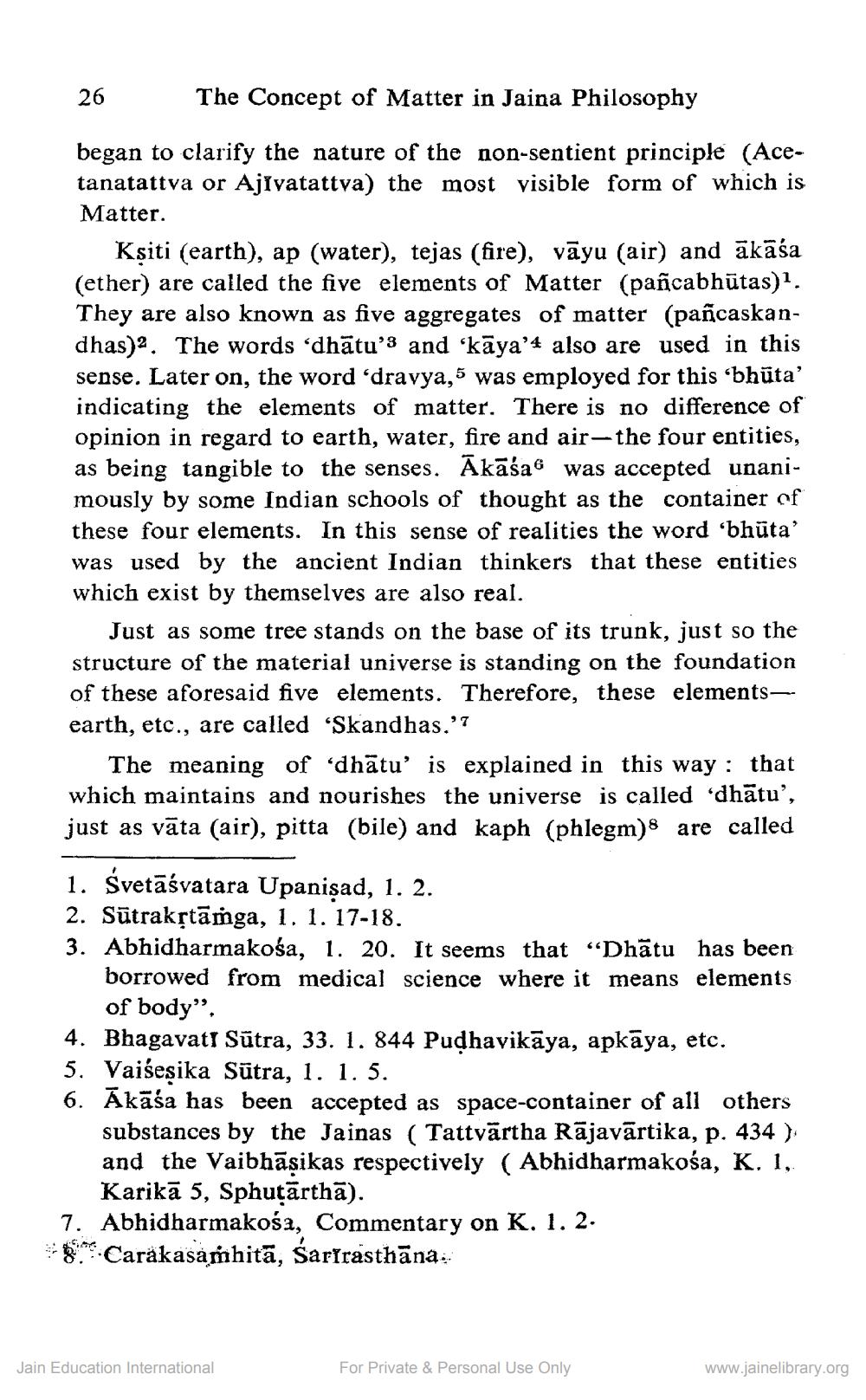________________
26
The Concept of Matter in Jaina Philosophy
began to clarify the nature of the non-sentient principle (Acetanatattva or Ajivatattva) the most visible form of which is Matter.
Kșiti (earth), ap (water), tejas (fire), vāyu (air) and ākāśa (ether) are called the five elements of Matter (pañcabhūtas). They are also known as five aggregates of matter (pañcaskandhas)2. The words 'dhātu's and ‘kāya'4 also are used in this sense. Later on, the word 'dravya, 5 was employed for this 'bhūta' indicating the elements of matter. There is no difference of opinion in regard to earth, water, fire and air, the four entities, as being tangible to the senses. Ākāśas was accepted unanimously by some Indian schools of thought as the container of these four elements. In this sense of realities the word 'bhūta' was used by the ancient Indian thinkers that these entities which exist by themselves are also real.
Just as some tree stands on the base of its trunk, just so the structure of the material universe is standing on the foundation of these aforesaid five elements. Therefore, these elements— earth, etc., are called 'Skandhas.'?
The meaning of 'dhātu' is explained in this way: that which maintains and nourishes the universe is called 'dhātu', just as vāta (air), pitta (bile) and kaph (phlegm) are called
1. Svetāśvatara Upanisad, 1. 2. 2. Sūtrakstāmga, 1. 1. 17-18. 3. Abhidharmakośa, 1. 20. It seems that “Dhātu has been
borrowed from medical science where it means elements
of body", 4. Bhagavati Sūtra, 33. 1. 844 Pudhavikāya, apkāya, etc. 5. Vaišeşika Sūtra, 1. 1. 5. 6. Ākāśa has been accepted as space-container of all others
substances by the Jainas ( Tattvārtha Rāmavārtika, p. 434 ) and the Vaibhāşikas respectively (Abhidharmakośa, K. 1,
Karikā 5, Sphuţārthā). 7. Abhidharmakośa, Commentary on K. 1. 2. 8. Caräkasasihitā, Sarfrasthāna..
Jain Education International
For Private & Personal Use Only
www.jainelibrary.org




